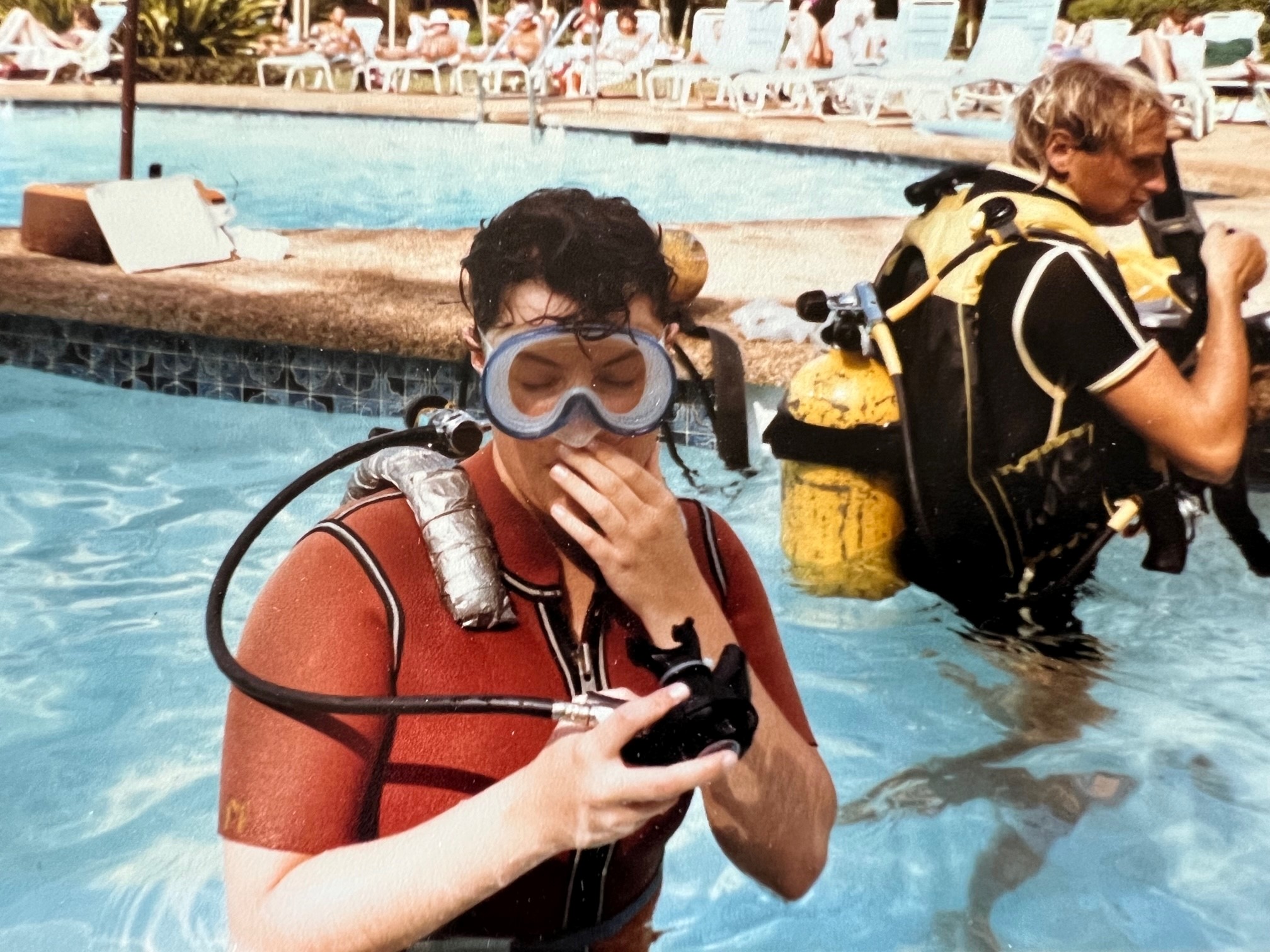
Vicki talks about the other world
By Vicki Clark
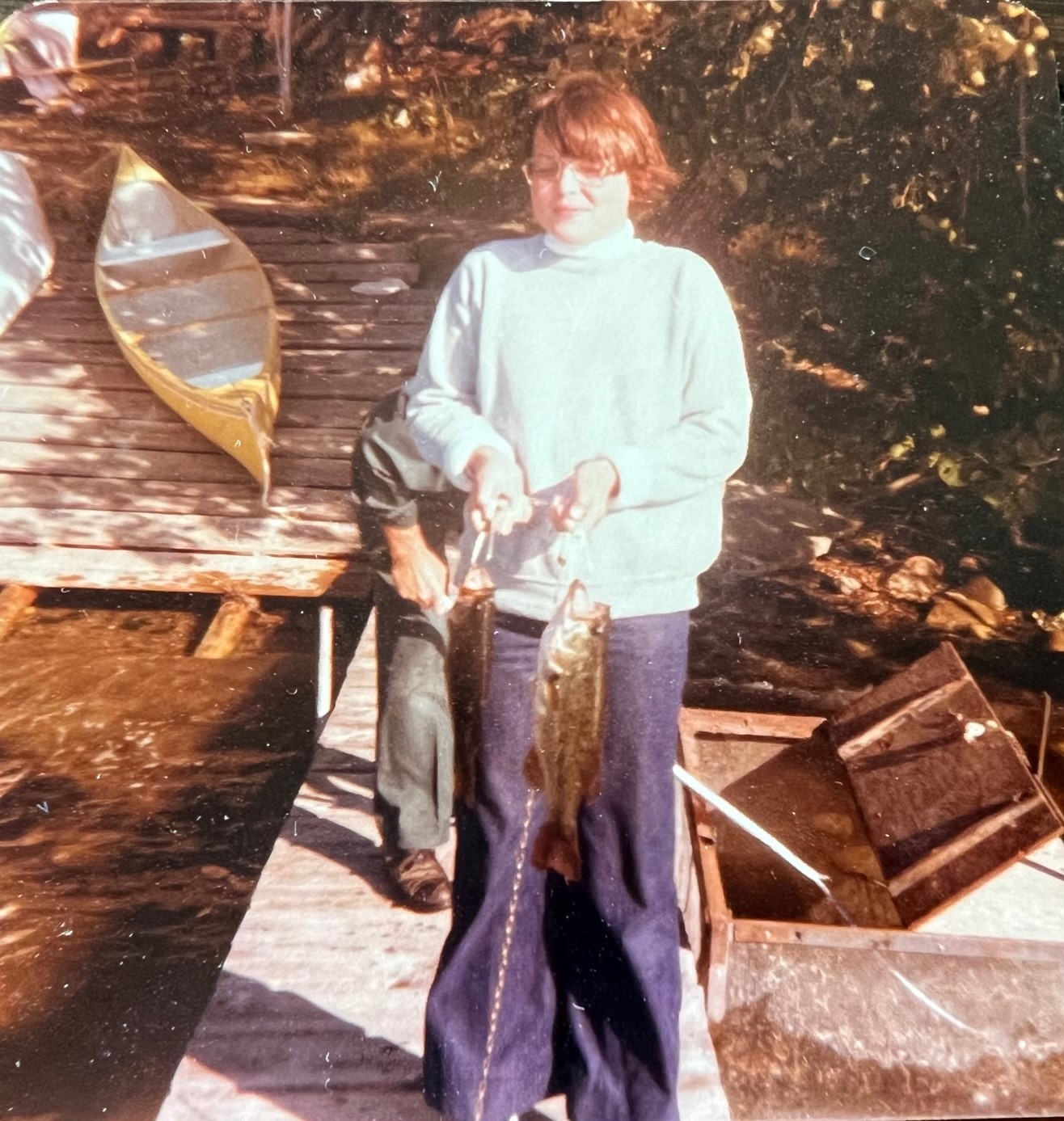
As a kid growing up in Iowa, there were no oceans. What I initially learned about oceans was that there had been an ocean where Iowa is millions of years ago, and we went on a field trip to collect fossils of those long-dead small sea creatures. Very cool things to think about as a youngster.
The first time I saw the ocean was the Pacific Ocean on a family vacation to California the summer after eighth grade. We visited family and went to Disneyland and Knott’s Berry Farm, and we also went to the beach. I had been to lakes in the Midwest, but the power of water really made an impression that day. Getting pummeled in the waves, floating on the water just outside where the waves crashed on shore, and seeing the immensity of water to the horizon hooked my imagination.
A piece of the ocean?
After that, I loved learning about the sea. For my biology project in tenth grade, I started a small saltwater aquarium, and learned it was not a cheap hobby. I was 16 and had a job, and a lot of my money was invested in that tank. I was fascinated to watch the mutualistic relationship between the sea anemone and tomato clownfish. The purple sea urchin would help keep the algae under control. I had a lionfish and he loved his guppies. I had a beautiful yellow tang as well. I learned a lot with that tank and spent tranquil time watching every being in it.
I bought a seahorse and was so excited to watch her. I had to buy tiny guppies for her and put a glass divider in the tank to feed her because the lionfish was the fast predator in that environment. I soon learned that seahorses do not take to captivity, and she stopped eating. I was heartbroken to have contributed to her demise.
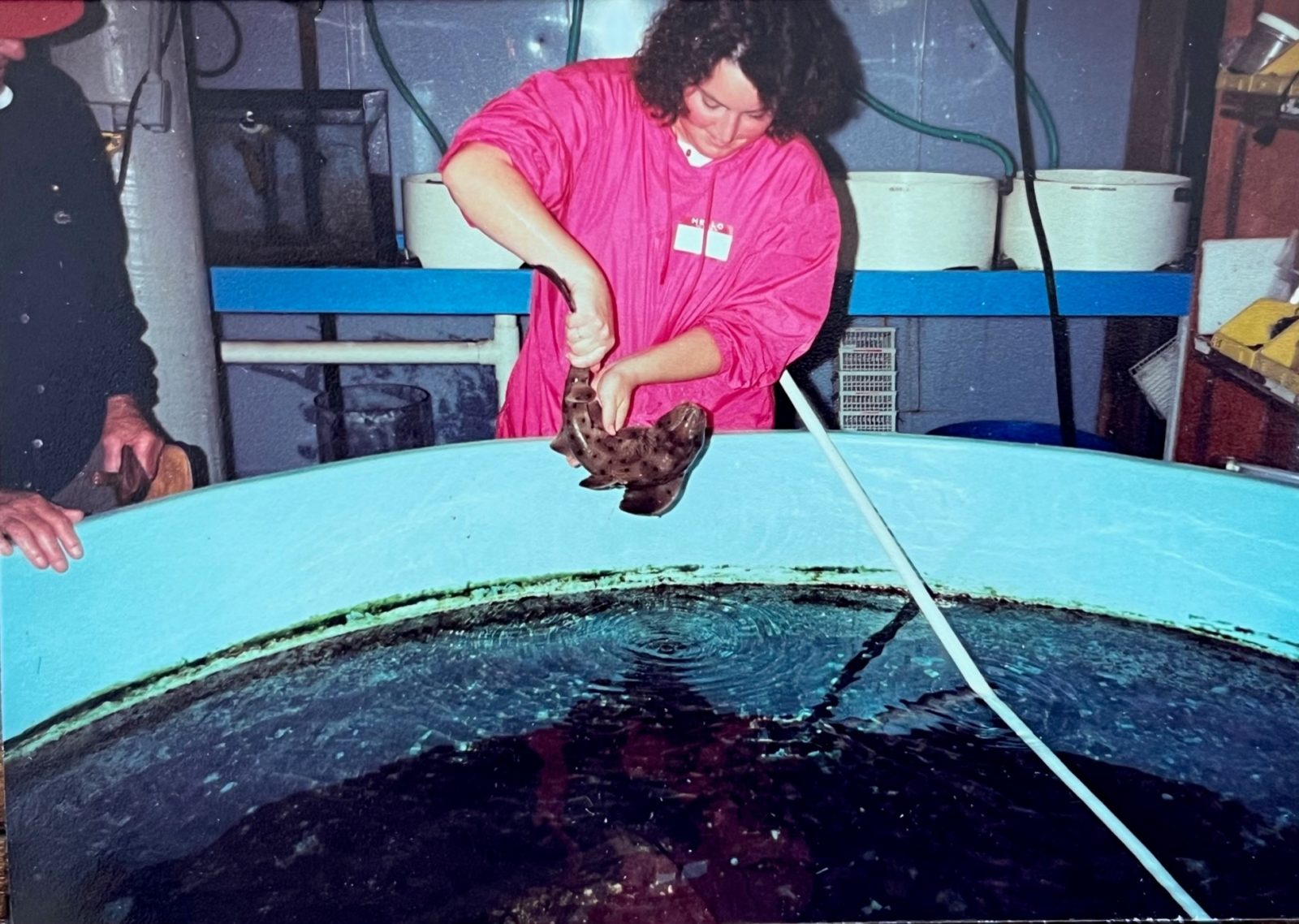
I also got a beautiful clown or spotted sweetlips, brown with white spots and beautiful fins. I went home to acclimatize her to the tank and did all the steps carefully. Once she was fully in the aquarium, she soon started to swim upside down erratically and died. Boy, I cried as that whole scenario played out.
After that, I did not buy any new creatures. They were meant to live longer and more fulfilling lives in their home ecosystems. And I knew I wanted to work to protect those ecosystems. I had decided that I would do that by becoming a marine biologist. So, as I went off to college in Santa Barbara and the ocean, I donated my aquarium to my high school biology teacher, as the anemone, clownfish, lionfish, and yellow tang were still doing very well. My teacher later told me that the lionfish had stung him when he was cleaning the tank. Ouch! He had read that fish get used to who cares for them and feeds them, and the lionfish apparently knew my teacher wasn’t me.
What’s down there?
Santa Barbara was wonderful and learning about the underwater world that is so foreign to humans taught me a lot about how everything is connected. Nature is all of the relationships between species, and everything has a niche and job to do. You can see it everywhere. And in the ocean, it was all the more fascinating to me because of the vastness of the oceans and how little we actually know about all of the ecosystems.
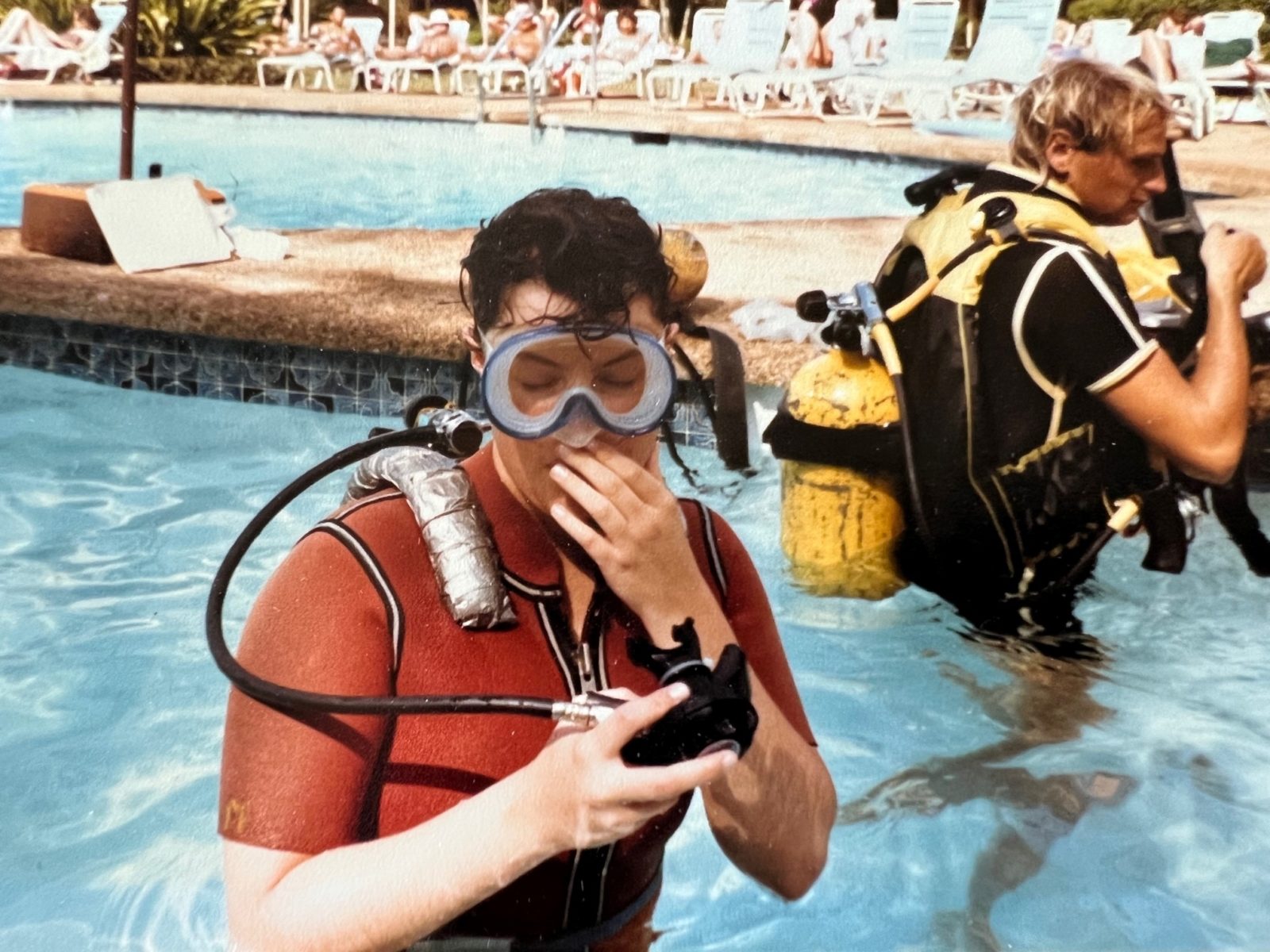
It was also the greatest lesson to me to learn disappointment—and sometimes tremendous anger—in humans for how little care we have for the planet as a whole, let alone relationships with other beings. And also to have forgotten that humans are part of nature.
While I ultimately changed course in my choice of career, I did not leave behind my love for the ocean and its many mysteries. Toward the end of my college years, I saved up to take a scuba diving course with a friend. It was so amazing to think about spending time in another world for a while. One where I have little power and if I didn’t follow the rules for how to be in that world and something goes wrong, I cannot breathe.
My final certification dives happened at Santa Cruz Island offshore of Santa Barbara. I found it so exciting and invigorating. Of course, when you’re in that state, you tend to breathe a lot and use up your tank of air quickly! But in those two dives, what wonders—seeing the rocky environment with anemones, sea stars, Garibaldi (California state fish), and sea lions come check us out.
I rented gear several times after that and did some beach dives with friends, but unfortunately, I had chosen another expensive endeavor—going to law school.
Under the sea is the place for me
Fast forward to 2006. I was finally in a place to get back into scuba diving. My first time getting back in the water for re-orientation was in Fiji! A lot had changed since the 90’s, and I no longer had to read the old navy charts for length and depth of dives and surface intervals. Computers for everything!
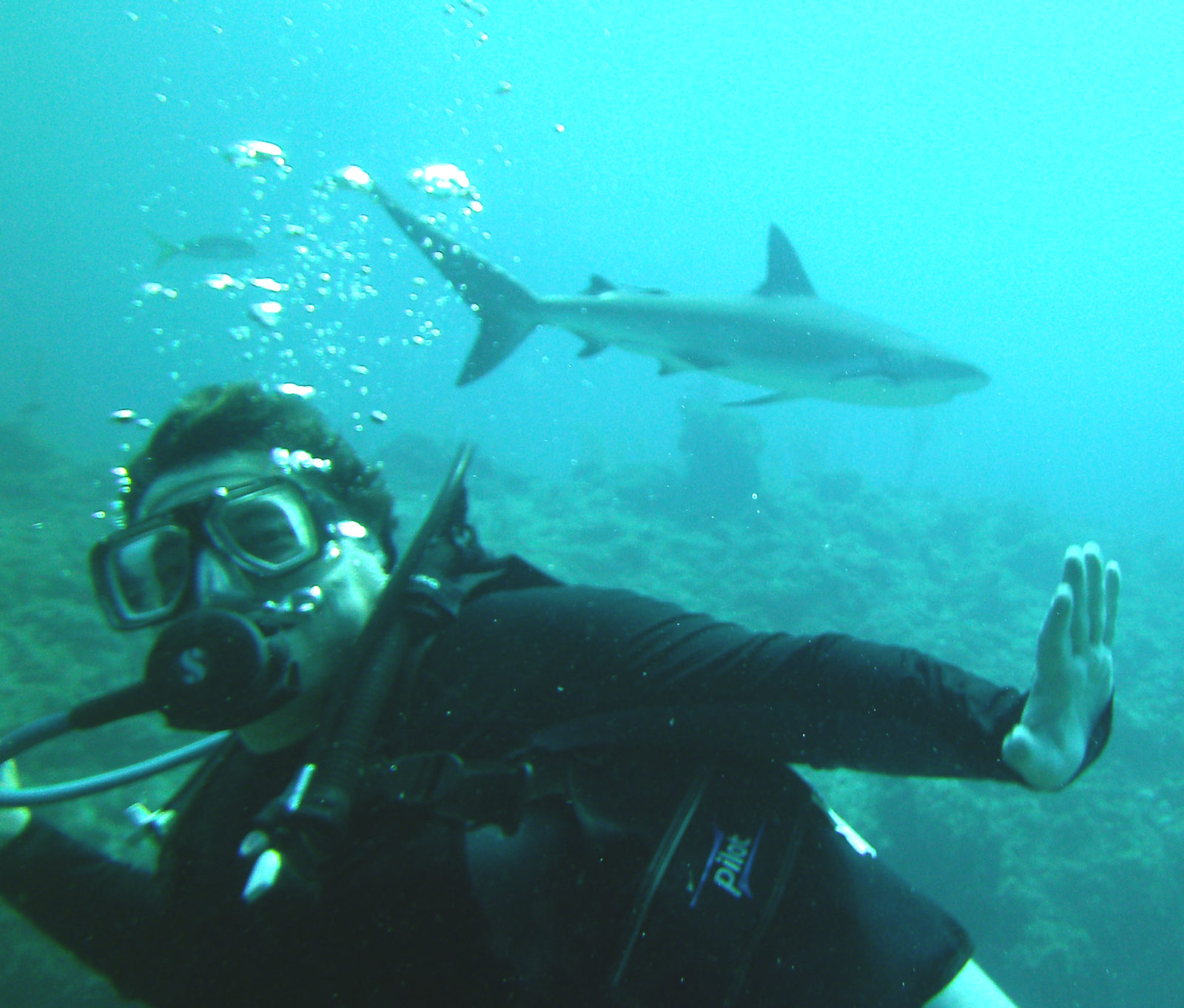
We were on the island of Kadavu, and just off the beach of where we stayed, the water was shallow for snorkeling. Just putting my head in the water, I could see various small heads of coral with small populations of damsel fish around each one. It was like being inside an aquarium! I did my gear check and practice dive, and it was like riding a bike.
The next day was my first full dive in 15 years. I took the giant stride off the back of the boat and was floating on the surface. Once my buddies were with me, I raised my left arm to deflate my buoyancy compensator, and began sinking below the surface. The water was clear, and I could see the bottom and the many fish. As I got to about 35 feet down, I adjusted my buoyancy, and I was off to find all of the beauty and wonder of this amazing world. Damsel fish, trigger fish, barracuda, jacks, nudibranchs, sharks, octopus, eels, manta rays, scorpion fish and on and on and on.
For me, under the sea is the place to be to truly be recharged. And if you’re in Hawaii in January/February and are lucky enough to hear the humpbacks sing when you’re under, life doesn’t get any better than that.
Three questions about spending time with/in nature
What do you think is the ideal amount of time for you to spend in/with nature?
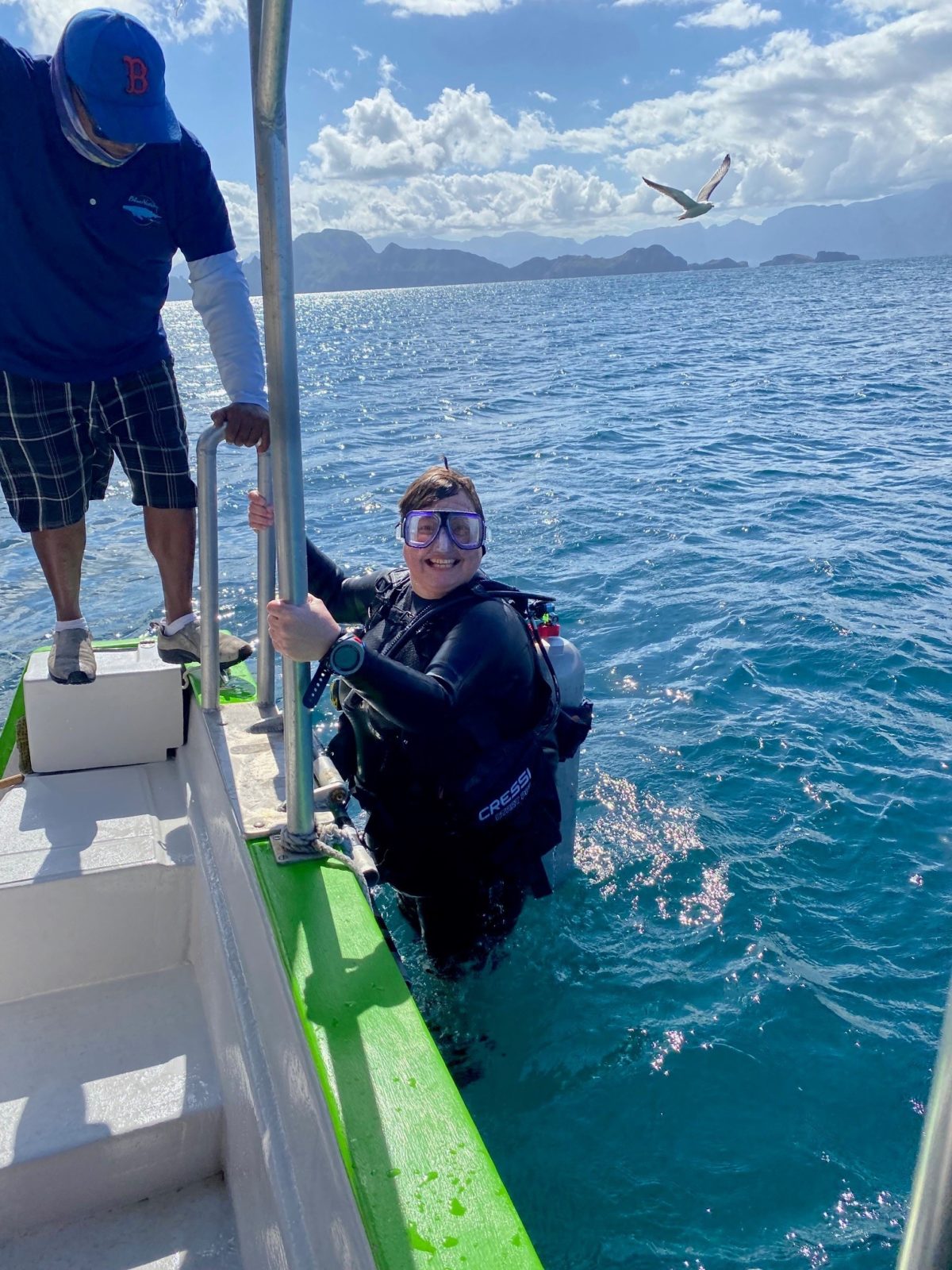
Getting outside is a necessity every day, no matter how much time. I’m not into super long hikes, but getting out to walk the dog, do yard work, watch the birds and look at all the beauty that Anchorage has to offer is important to me.
What does a meaningful experience in nature look like for you?
Whenever I can stop and really listen to what is happening all around me in the natural world is meaningful to me. That transports me from being all in my head with all the questions, decisions, and clutter of life, to a place of peace for my brain. Any time I can get that, I’m really happy!
Describe one moment in nature/outdoors that left you with a sense of awe and connection?
When my mom lived on Kauai, I would visit for at least a couple of weeks in the winter and would go diving several times. On one dive, I was swimming along with the group and I saw something moving on the sandy bottom, so I detoured over. There was a scorpion fish, which is a mostly sedentary fish that blends in with surrounding rock and coral. Their spines are poisonous, so if you step on one, it isn’t fun.
Anyway, the scorpion fish was using its front fins to crawl along the sea floor. It was a slow and laborious journey. I turned and caught the eye of another diver and motioned them over. We floated and watched the scorpion fish’s journey until it was time to surface. Just having that glimpse into the life of a scorpion fish was so incredible. I saw something that 99.99999% of people in the world won’t ever see and it made me feel a connection to that scorpion fish.
Vicki is the executive director with Trustees. Her story is the fourteenth in a monthly series about how nature, getting outside, and being with land and water influences human health, resilience, connection, and purpose. Look for these stories in our monthly newsletters.
Previous stories in the series:
- Geoff’s story: Sketching nature, respect, and wonder
- Lydia’s story: When I grow up, I’m going to be outdoors!
- Suzanne’s story: From tidepools to tussocks
- Brook’s story: Finding joy on mountain ridges
- Dawnell’s story: A walk in the Arctic
- Bridget’s story: The outside life–an ode to icy slopes and jampacked campgrounds
- Lang’s story: Being in that exact spot, at that exact moment
- Brian’s story: A recipe for well being
- Joanna’s story: This seasick soul is lovesick for the sea
- Tracy’s story: My summers with dirt
- Ashley’s story: Just a country girl
- Rachel’s story: Nature teaches me I’m the protagonist in my own life
- Katie’s story: Howling pierced the morning quiet


